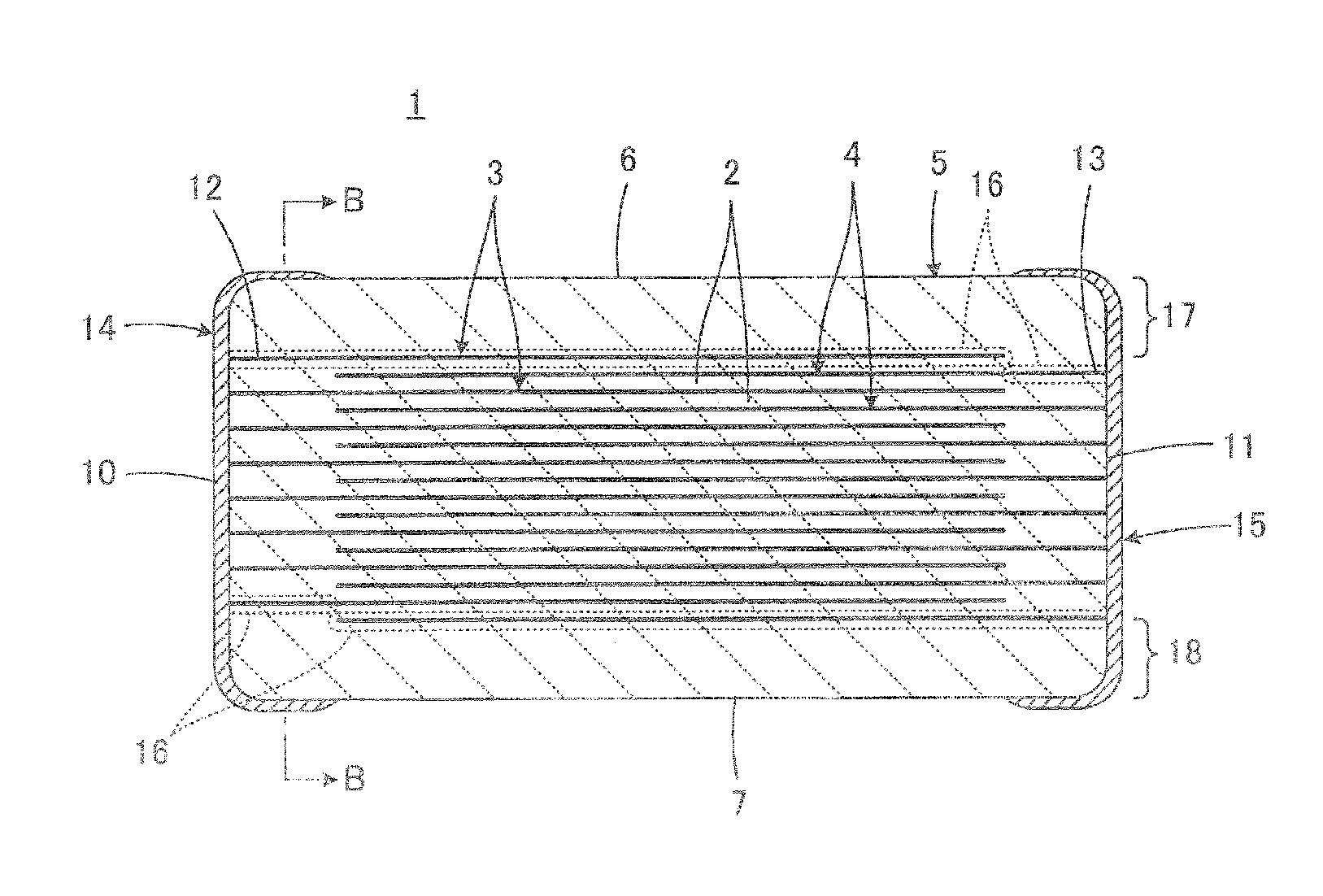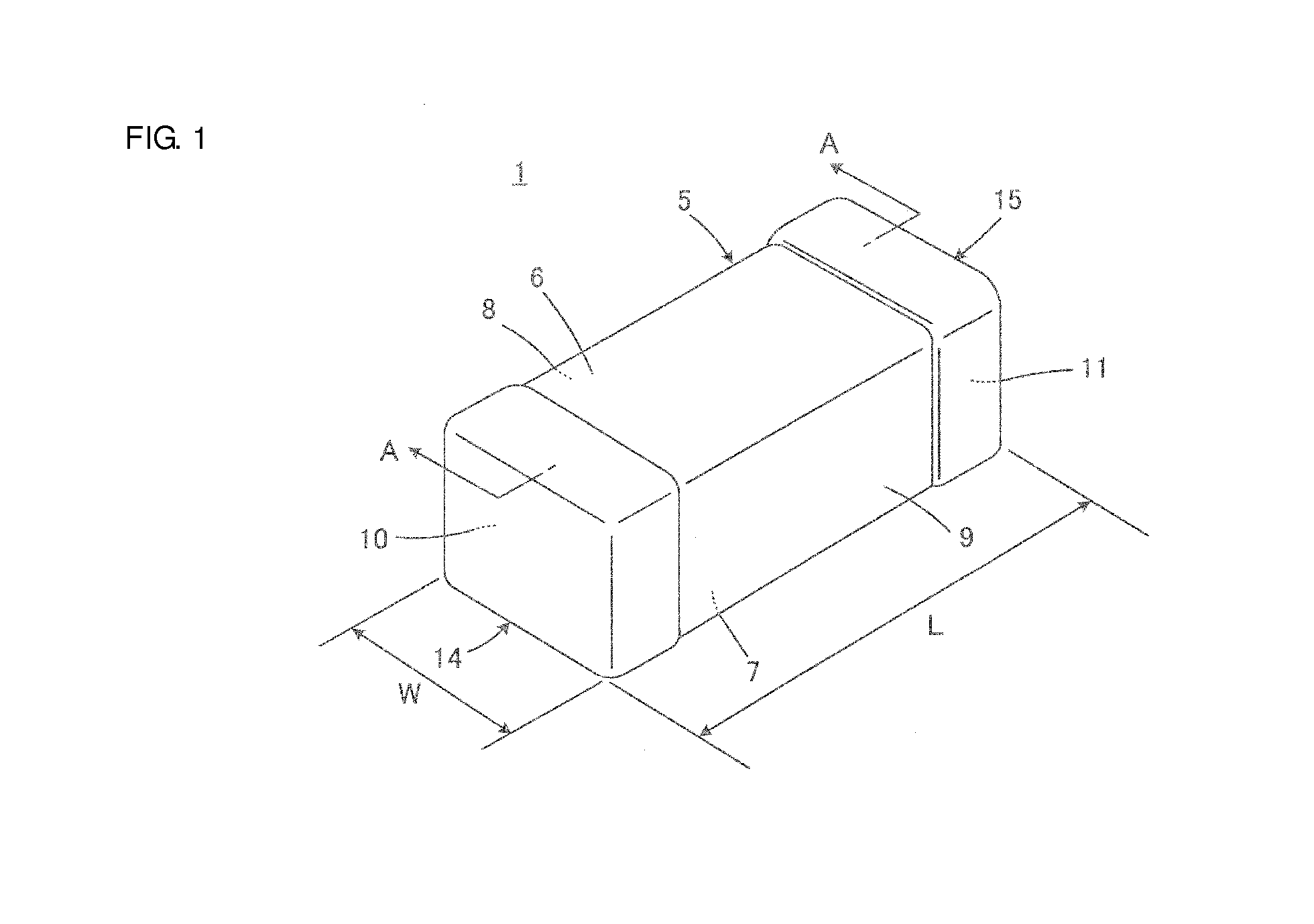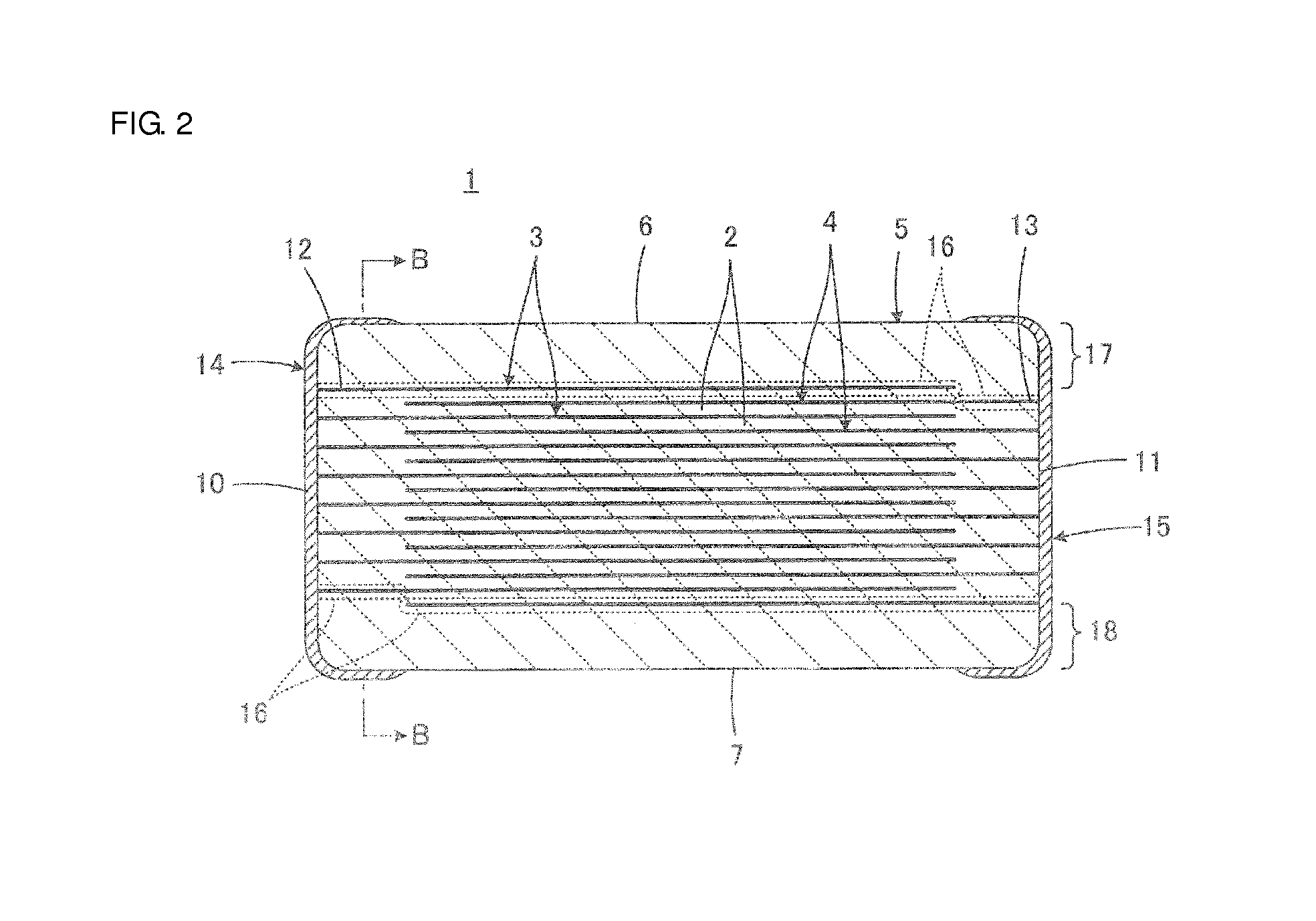Monolithic ceramic electronic component
- Summary
- Abstract
- Description
- Claims
- Application Information
AI Technical Summary
Benefits of technology
Problems solved by technology
Method used
Image
Examples
example 1
[0047]In Example 1, attention was focused particularly on the Mg—Ni coexistence regions 16 present in the portions of the first and second inner electrodes 3 and 4 that are located in the peripheral section of the region containing the exposed ends 12 and 13 as shown in FIG. 3. Effects of this Mg—Ni coexistence region 16 were investigated.
[0048]Monolithic ceramic electronic components were prepared as samples.
[0049]A component body included in each monolithic ceramic electronic component was obtained as described below. Green ceramic sheets to be formed into ceramic layers and conductive paste films, to be formed into inner electrodes, containing Ni were stacked, such that the green component body was prepared. The green ceramic sheets contained a barium titanate-based dielectric ceramic material containing Mg.
[0050]The green component body was calcined. In the calcination step, the progress of the oxidation of Ni in the conductive paste films was varied in such a way that an oxidiz...
example 2
[0061]In Example 2, attention was focused particularly on the Mg—Ni coexistence regions 16 present in the first and second inner electrodes 3 and 4 that are at an outermost location as shown in FIG. 2 when the region containing the first and second inner electrodes 3 and 4 is viewed in the stacking direction. Effects of these Mg—Ni coexistence regions 16 were investigated.
[0062]Monolithic ceramic electronic components which were not an L-W reverse type and which were different from those prepared in Example 1 were prepared as samples.
[0063]Green component bodies having a composition substantially identical to that of the component bodies used in Example 1 were prepared. Each green component body was calcined. In the calcination step, an oxidizing atmosphere was controlled in the course of heating before green ceramic sheets were sintered, such that the amount of Mg diffusing in inner electrodes was varied and the sintered component body was obtained. The amount of Mg in the inner el...
example 3
[0072]In Example 3, as well as Example 2, attention was focused particularly on the Mg—Ni coexistence regions 16 present in the first and second inner electrodes 3 and 4 that are at an outermost location as shown in FIG. 2 when the region containing the first and second inner electrodes 3 and 4 is viewed in the stacking direction. Effects of these Mg—Ni coexistence regions 16 were investigated.
[0073]Monolithic ceramic electronic components were prepared as samples in substantially the same way as that described in Example 2 except that outer electrodes were formed on each component body in such a way that the component body was subjected to Cu electroplating, Ni electroplating, and then Sn electroplating.
[0074]As shown in Table 3, each region, present in outermost layer, having an Mg-to-Ni molar ratio of about 0.1 or greater and the rate of occurrence of delamination were determined in substantially the same ways as those described in Example 2.
TABLE 3Region, present in outermost la...
PUM
| Property | Measurement | Unit |
|---|---|---|
| Fraction | aaaaa | aaaaa |
| Fraction | aaaaa | aaaaa |
| Fraction | aaaaa | aaaaa |
Abstract
Description
Claims
Application Information
 Login to View More
Login to View More - R&D
- Intellectual Property
- Life Sciences
- Materials
- Tech Scout
- Unparalleled Data Quality
- Higher Quality Content
- 60% Fewer Hallucinations
Browse by: Latest US Patents, China's latest patents, Technical Efficacy Thesaurus, Application Domain, Technology Topic, Popular Technical Reports.
© 2025 PatSnap. All rights reserved.Legal|Privacy policy|Modern Slavery Act Transparency Statement|Sitemap|About US| Contact US: help@patsnap.com



